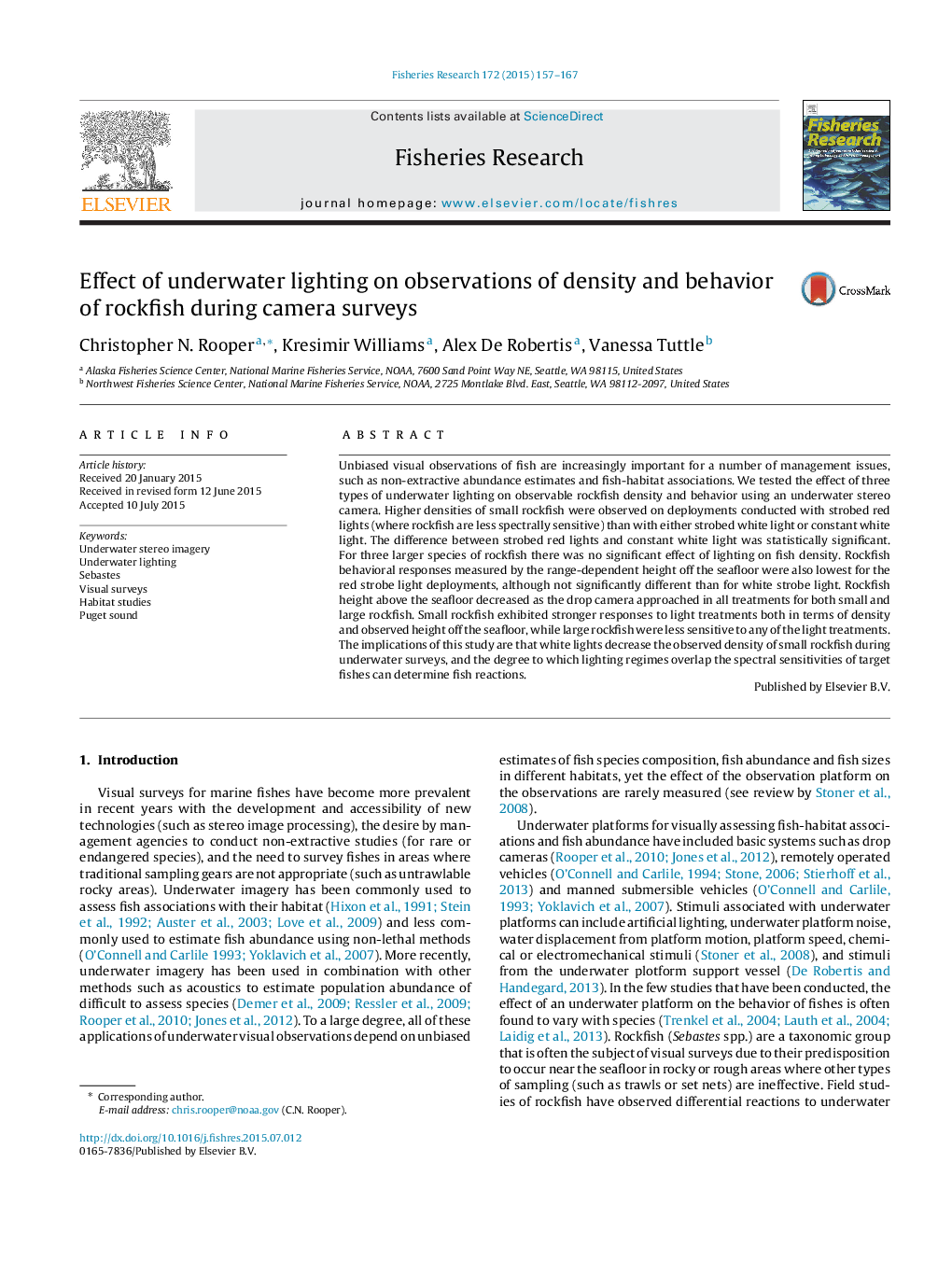| Article ID | Journal | Published Year | Pages | File Type |
|---|---|---|---|---|
| 6385427 | Fisheries Research | 2015 | 11 Pages |
Abstract
Unbiased visual observations of fish are increasingly important for a number of management issues, such as non-extractive abundance estimates and fish-habitat associations. We tested the effect of three types of underwater lighting on observable rockfish density and behavior using an underwater stereo camera. Higher densities of small rockfish were observed on deployments conducted with strobed red lights (where rockfish are less spectrally sensitive) than with either strobed white light or constant white light. The difference between strobed red lights and constant white light was statistically significant. For three larger species of rockfish there was no significant effect of lighting on fish density. Rockfish behavioral responses measured by the range-dependent height off the seafloor were also lowest for the red strobe light deployments, although not significantly different than for white strobe light. Rockfish height above the seafloor decreased as the drop camera approached in all treatments for both small and large rockfish. Small rockfish exhibited stronger responses to light treatments both in terms of density and observed height off the seafloor, while large rockfish were less sensitive to any of the light treatments. The implications of this study are that white lights decrease the observed density of small rockfish during underwater surveys, and the degree to which lighting regimes overlap the spectral sensitivities of target fishes can determine fish reactions.
Keywords
Related Topics
Life Sciences
Agricultural and Biological Sciences
Aquatic Science
Authors
Christopher N. Rooper, Kresimir Williams, Alex De Robertis, Vanessa Tuttle,
